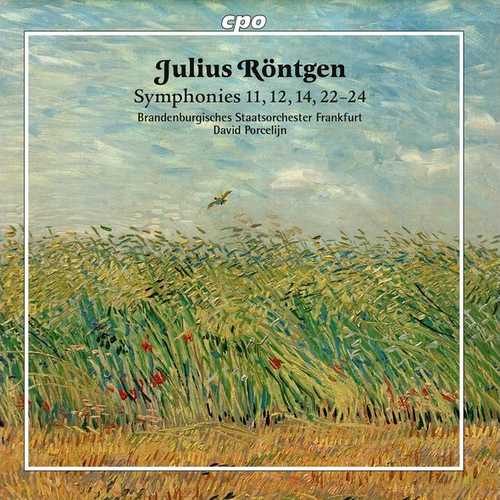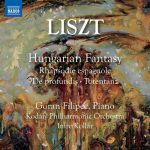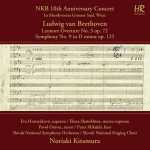
Composer: Julius Röntgen
Orchestra: Brandenburgisches Staatsorchester Frankfurt, Helsingborg Symphony Orchestra
Conductor: David Porcelijn
Number of Discs: 2
Format: FLAC (tracks)
Label: CPO
Catalogue: 7773092
Release: 2021
Size: 535 MB
Recovery: +3%
Scan: yes
CD 01
Symphony No. 7 in F minor ‘Edinburgh’
01. I. Un poco sostenuto
02. II. Allegro molto eed agitato
03. III. Andante tranquillo
04. IV. Allegro assai e passionata
05. Symphony No. 14 in D Major ‘Winterthur’
06. Symphony No. 12 in C Major ‘In Babylone’
CD 02
01. Symphony No. 11 in G Minor ‘Wirbel’
02. Symphony No. 23 in C minor
03. Symphony No. 22 in F sharp major
Symphony No. 24 in E major
04. I. Andante solenne
05. II. Allegro
06. III. Andante
07. IV. Allegro giocoso
These works once again demonstrating that Röntgen was the most highly imaginative composer in Holland during the second half of the nineteenth century. Julius Röntgen composed his Symphony No. 12 in C major (“In Babylone”) in 1930, along with eight further symphonies. Seven of these works are laid out in a single movement and last from ten to 15 minutes. The actual main theme of Symphony No. 12 is only heard at the end in the plein jeu of the organ. At the beginning of 1930 Julius Röntgen was awarded an honorary doctorate from the University of Edinburgh. The degree was proposed by Professor Donald Francis Tovey, with whom he had already developed a friendship by 1910. Tovey considered Röntgen the last link in a chain proceeding from Beethoven, Schubert and Brahms, a man capable of telling and teaching us of these 19th-century titans. Röntgen was so surprised and delighted at the prospect of this tribute that he immediately set out to compose his Seventh Symphony in F minor, the “Edinburgh” Symphony. Following the model of Joseph Haydn and his “Oxford” Symphony, he intended to present it to the university’s senate at the awards ceremony. Röntgen celebrated the Christmas season and New Year’s Day with the newly married couple in Winterthur, where his newest – and last – symphony originated in 1930. Symphony No. 14 in D major (“Winterthur”) makes do with a small amount of material. The horns enter on natural harmonics in D major, seemingly emerging directly from the Alpine scenery.



